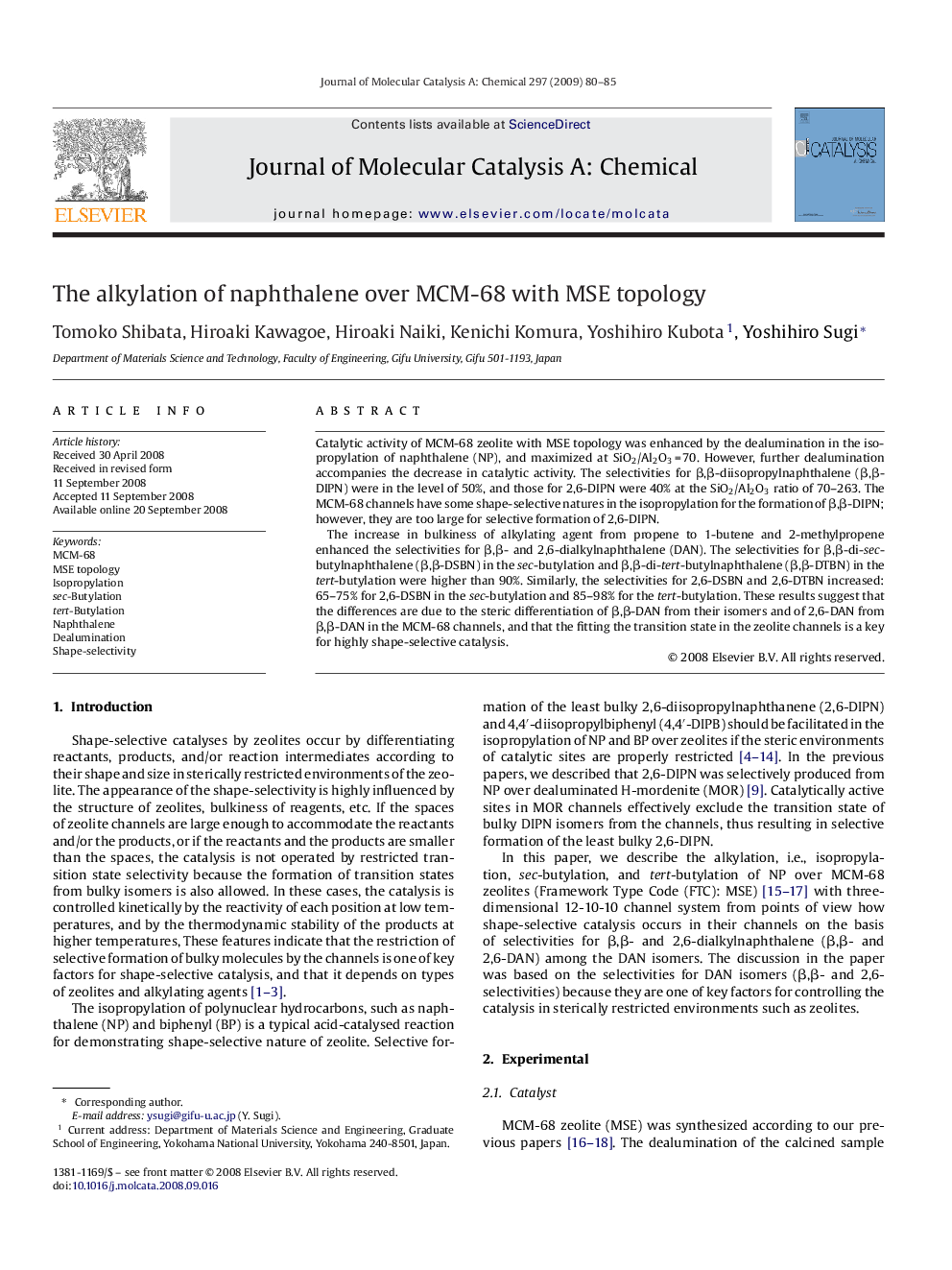| کد مقاله | کد نشریه | سال انتشار | مقاله انگلیسی | نسخه تمام متن |
|---|---|---|---|---|
| 67312 | 48476 | 2009 | 6 صفحه PDF | دانلود رایگان |

Catalytic activity of MCM-68 zeolite with MSE topology was enhanced by the dealumination in the isopropylation of naphthalene (NP), and maximized at SiO2/Al2O3 = 70. However, further dealumination accompanies the decrease in catalytic activity. The selectivities for β,β-diisopropylnaphthalene (β,β-DIPN) were in the level of 50%, and those for 2,6-DIPN were 40% at the SiO2/Al2O3 ratio of 70–263. The MCM-68 channels have some shape-selective natures in the isopropylation for the formation of β,β-DIPN; however, they are too large for selective formation of 2,6-DIPN.The increase in bulkiness of alkylating agent from propene to 1-butene and 2-methylpropene enhanced the selectivities for β,β- and 2,6-dialkylnaphthalene (DAN). The selectivities for β,β-di-sec-butylnaphthalene (β,β-DSBN) in the sec-butylation and β,β-di-tert-butylnaphthalene (β,β-DTBN) in the tert-butylation were higher than 90%. Similarly, the selectivities for 2,6-DSBN and 2,6-DTBN increased: 65–75% for 2,6-DSBN in the sec-butylation and 85–98% for the tert-butylation. These results suggest that the differences are due to the steric differentiation of β,β-DAN from their isomers and of 2,6-DAN from β,β-DAN in the MCM-68 channels, and that the fitting the transition state in the zeolite channels is a key for highly shape-selective catalysis.
The alkylation of naphthalene was examined over MCM-68 zeolite with MSE topology. The selectivities for the least bulky 2,6-dialkylnapthalene were increased with the bulkiness of alkylating agents, propene, 1-butene, and 2-methylpropene. The differences are due to the steric restriction of the isomers at their transition states in MCM-68 channels, resulting in the selective formation of 2,6-dialkylnaphtahene with bulky alkyl moieties.Figure optionsDownload as PowerPoint slide
Journal: Journal of Molecular Catalysis A: Chemical - Volume 297, Issue 2, 14 January 2009, Pages 80–85